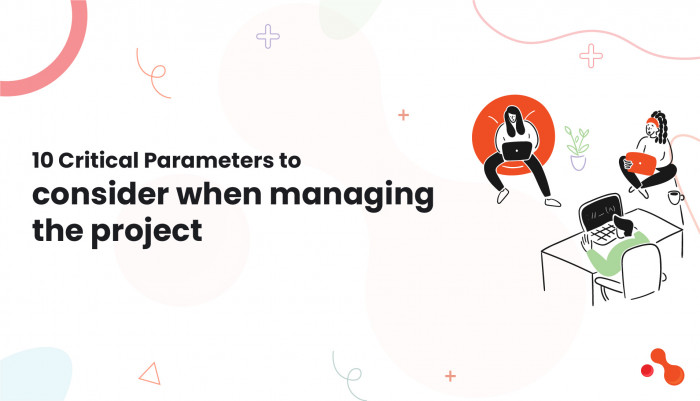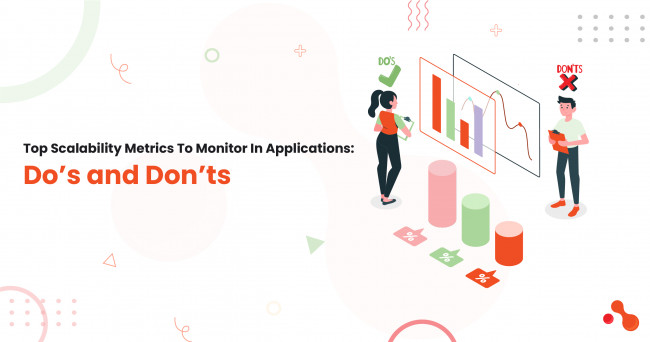Introduction
In project management, the success of any project depends purely on a number of factors. Understanding these factors and utilizing Project Management Tools is necessary to ensure that projects meet their goals and offer value to everyone involved in the project. This article talks about the critical parameters for integration that leads to project success, explaining each aspect which contributes to effective project execution in simple terms.
Before getting into the details of Critical parameters let us first understand a few definitions related to project management in any remote team development.
Definition of Key terms

Project Management
It is a process of planning, organizing and managing resources to achieve specific goals within any project.
Stakeholder
They are the individuals that have an interest in the outcome of the project.
Scope Creep
These are uncontrolled growth of a prospect’s scope without adjusting time, cost and resources.
Risk Management
The process of identifying, assessing and controlling potential problems that might affect the project.
Quality Assurance
The process of making sure that project deliverables meet required standards and expectations.
10 Critical Parameters to consider when managing the project

The Iron Triangle: Cost, Time and Scope
The foundation of project success is often represented by the Iron Triangle, i.e. cost, time and scope. These three elements should be managed well in order to achieve project goals.
Effective project management depends on three key parameters: Cost, Time, and Scope.
Cost: Projects need to stay within budget. Effective cost management involves careful planning and tracking expenses to avoid overspending. Budgeting tools can help with this.
Time: Projects should be completed on time. Sticking to deadlines helps avoid wasting resources and keeps stakeholders happy. Tools like Gantt charts can help schedule tasks.
Scope: Clearly defining what the project will deliver is crucial. This includes outlining tasks and milestones. Avoiding scope creep, adding extra features without proper evaluation, is important for staying on track.
Stakeholder Satisfaction
Stakeholders are important to the success of any project. Their satisfaction can impact the outcome.
Engagement: Regular communication with stakeholders ensures that their needs are understood and met. Tools for managing stakeholders can help keep everyone informed.
Feedback Mechanisms: Setting up ways for stakeholders to give feedback throughout the project helps ensure their satisfaction. Surveys and interviews can be useful for gathering input.
Alignment with Goals: Making sure the project's objectives align with stakeholders' goals increases support and commitment from them. Collaborative planning at the start can help achieve this alignment.
Team Satisfaction
A motivated team would produce efficient hard work to achieve tons of success.
Work Environment: Creating a positive work environment encourages teamwork and productivity through flexible arrangements, recognition programs, and team-building activities.
Skill Development: Investing in training enhances team skills and job satisfaction; providing opportunities for growth leads to higher engagement levels among team members.
Clear Roles & Responsibilities: Clearly defined roles help team members understand their contributions; clarity reduces confusion and increases accountability within the team.
Quality Management
It is an important factor that can impact the success of the business.
Quality Assurance Processes: Implementing quality assurance methods ensures that deliverables meet required standards; techniques like Six Sigma can be beneficial for maintaining quality.
Continuous Improvement: Encouraging a culture of continuous improvement allows teams to learn from past experiences; regular reviews at the end of each phase can facilitate this learning process.
Risk Management
Identifying and addressing risks is essential for the success of any project.
Risk Assessment: Conducting thorough risk assessments at the start helps identify potential problems early on; tools like risk matrices can help evaluate risks based on likelihood and impact.
Mitigation Strategies: Developing strategies to manage identified risks ensures that teams are ready to tackle challenges as they arise; having backup plans for high-impact risks is essential.
Monitoring & Review: Continuously monitoring risks throughout the project allows teams to adapt their strategies as needed; regular risk review meetings keep risks in focus.
Resource Utilization
An effective resource management is important for maximizing productivity.
Resource Allocation: Properly allocating resources—people, technology, and money—ensures that teams have what they need to succeed; resource management tools can help track availability and usage rates effectively.
Capacity Planning: Understanding how much work each team member can handle prevents overload; regular assessments help with planning future projects more effectively.
Utilizing Technology: Using technology for resource management can streamline processes; project management software often includes features for tracking resource allocation efficiently.
Communication Strategies
Effective communication is necessary to keep teams and stakeholders aligned throughout the project.
Communication Plans: Developing a clear communication plan outlines how information will be shared among team members and stakeholders; this plan should specify communication channels, frequency, and responsible parties for updates.
Regular Updates: Keeping stakeholders informed through regular updates fosters transparency; status reports or briefings can be used to share progress highlights.
Collaborative Tools: Using collaborative tools enhances communication among team members, especially in remote or hybrid work environments; platforms like Slack or Microsoft Teams facilitate real-time discussions.
Change Management
Projects quite often face changes in scope, timelines or resources which needs an effective change management strategies.
Change Control Processes: Establishing formal processes helps manage changes systematically without disrupting the project's flow; change requests should be documented and evaluated before approval.
Impact Analysis: Assessing how proposed changes affect cost, time, and scope ensures that all implications are considered before making adjustments.
Training on Change Adaptation: Providing training on how to adapt to changes helps teams remain flexible in response to evolving requirements.
Alignment with Organizational Goals
Ensuring that projects align with broader organizational goals enhances their importance.
Strategic Planning Sessions: Engaging in planning sessions with leadership helps align projects with organizational priorities; this alignment ensures effective resource allocation toward initiatives that drive business objectives forward.
Performance Metrics: Establishing performance metrics that reflect organizational goals allows teams to measure their contributions toward achieving these objectives effectively.
Lessons Learned
Capturing lessons learned throughout the project lifecycle is necessary for the ongoing improvement.
Documentation Practices: Implementing documentation practices ensures insights gained from each phase are recorded for future reference; this documentation should include successes, challenges faced, and strategies employed during execution.
Post-Mortem Analysis: Conducting post-mortem analyses after project completion allows teams to reflect on what worked well and what could be improved in future initiatives.
Now, let us learn about a few tools that you can use while managing your software development project.
3 Top Project Management tools
Project Management tools are important for streamlining processes, enhancing collaboration and ensuring a successful execution of projects. Below are a few popular project management tools and its key features:
Jira
Jira is a comprehensive project management tool that offers robust features for agile software development teams. Its key features include:
- Scrum and Kanban boards for visualizing tasks and workflows
- Issue tracking for managing bugs, features, and improvements
- Roadmaps for planning and tracking projects at a high level
- Integrations with development tools like GitHub, Bitbucket, and Confluence
Jira's flexibility allows it to be customize for various project management methodologies, making it suitable for teams of all sizes and industries.
Asana
Asana is a versatile project management tool that helps teams organize, track, and manage their work. Its key features include:
- Task management for creating, assigning, and tracking tasks
- Calendars for visualizing tasks and deadlines
- Dashboards for monitoring project progress and team workloads
- Integrations with tools like Slack, Google Drive, and Dropbox
Asana's intuitive interface and customizable views make it easy for teams to collaborate and
stay on top of their projects.
Trello
Trello is a visual project management tool that uses boards, lists, and cards to help teams organize their work. Its key features include:
- Kanban boards for visualizing workflows and tracking progress
- Customizable cards for adding details, attachments, and due dates
- Power-Ups for integrating with other tools and adding extra functionality
- Templates for quickly setting up common project types
Trello's simplicity and flexibility make it a popular choice for teams looking for an easy-to-use project management solution.
Now, further let us discuss how an outsourced software development can help in Project Management
How an Outsourced Software Development Company Can Help with Project Management
Outsourcing software development projects can bring numerous benefits, including access to a larger talent pool, reduced costs, and faster time-to-market. However, managing an outsourced project requires a different approach compared to an in-house team.
Here's how an outsourced software development company can help with project management:
Clear Communication and Collaboration
An experienced outsourced team will have established processes for clear communication and collaboration. They will use tools like Slack, Zoom, and project management software to ensure that all team members, both in-house and remote, are on the same page.
Agile Methodologies
Many outsourced software development companies specialize in agile methodologies like Scrum and Kanban. By adopting these practices, they can help your project stay on track, adapt to changes, and deliver value quickly.
Risk Management
Outsourced teams are well-versed in identifying and mitigating risks associate with software development projects. They can help you create a risk management plan, monitor risks throughout the project lifecycle, and implement contingency measures when needed.
Quality Assurance
Outsourced teams typically have dedicated quality assurance (QA) engineers who ensure that the software meets the required standards. They use testing frameworks, automation tools, and best practices to catch bugs early and deliver high-quality software.
Scalability
As your project evolves, an outsourced team can help you scale up or down as needed. They can quickly ramp up resources for critical milestones or bring in specialized expertise for specific tasks.
By partnering with an experienced outsourced software development company, you can leverage their project management expertise, processes, and tools to ensure the success of your software development projects.
How Can Acquaint Softtech help?
Acquaint Softtech is an IT outsourcing firm that offers two services: software development outsourcing and IT personnel augmentation. We take pleasure in developing new applications with the Laravel framework as an official Laravel partner.
The greatest option for your company seeking to hire remote developers is Acquaint Softtech. Developers can become members of your current in-house team in as little as 48 hours with our expedited onboarding procedure.
We are also the greatest option for any kind of outsourced software development work because of our $15 hourly fee. To satisfy your requirement for specialist development, we can assist you in hiring remote developers, hire MEAN stack developers, hire MERN stack developers, and outsourced development services. Now let's collaborate to grow your company to new heights.
Wrapping Up!
In conclusion, any firm hoping to accomplish its goals effectively must comprehend the crucial integration characteristics that contribute to project success. Organizations can establish a strong foundation for successful project execution by concentrating on important areas like cost management, stakeholder satisfaction, team morale, quality assurance, risk mitigation, resource utilization, effective communication strategies, change management practices, alignment with organizational goals, and documenting lessons learned.
Setting aside time to design these parameters promotes a continuous improvement culture among teams as well as increasing the possibility of obtaining desired goals. Adopting these principles will enable firms to satisfy stakeholder expectations by navigating hurdles successfully and producing excellent results that meet more complex project requirements in today's fast-paced business climate.















